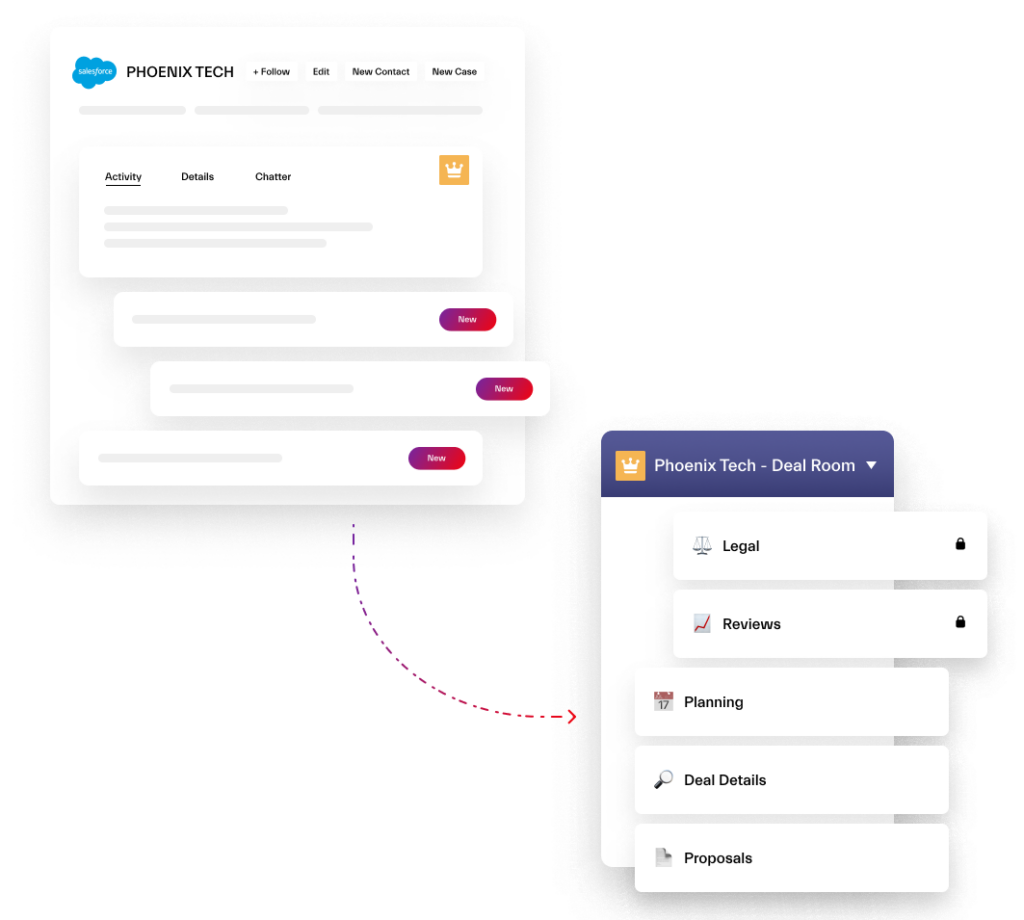There is no doubt, in today’s business reality companies can no longer compete just on price or product. Instead, they need to focus on customer experience and build strong relationships with their prospects and existing customers. Therefore, companies use CRMs and other software to store data and provide their services at the right time, through the right channel. But are you sure your sales teams use these tools effectively? How to improve your sales collaboration and connect your sales reps with the rest of the team? To answer these questions, today we discuss how to improve your opportunity collaboration with Salesforce and Microsoft Teams.
Importance of sales deal collaboration
Effectiveness of sales deal collaboration is a key indicator for closing deals and building long-term relationships with your customers. During the sales process, your sales managers interact with other colleagues, for example:
– They get information from marketing departments on lead generation and prospect’s needs.
– Salespeople interact with customer support team by offering the support opportunities need every step of the way.
-Your sales managers have to collaborate with colleagues from product development department to stay up to date with product updates, newly integrated features, and so on.
– Also, your sales team should be in touch with sales executives and operation managers who introduce new practices and tools and share their individual experience and skills.
– Finally, they should be informed about the entire company news and upcoming events in order not to lose the main vision and strategy.
Now imagine that you need to put above examples into practice and implement an effective system of communication using Salesforce and Microsoft Teams. Your sales team stores opportunities information, activities, and updates in Salesforce. But at the same time, they need to share everything with other colleagues who work in Microsoft Teams and don’t even have a Salesforce licence. Without building an effective sales deal collaboration you may face different challenges, such as:
Misalignment of sales team members
In fact, you won’t see any progress when your sales team collaborate on opportunities using Salesforce without sharing updates and news with other colleagues. Your team should have a single workspace where they can easily collaborate with each other to work on the same deal.

Loss of information between multiple platforms
If the way of sharing important prospect information isn’t pre-defined, you may experience information loss. When opportunity details are stored only in Salesforce, it is difficult to work on the same deal with other colleagues. Your sales reps need to have an effective way to share updates and news with their teammates to close deals and provide prospects with useful services and solutions.
No single sales execution process
Without an effective collaborative workplace, you won’t reach the same level of sales management process. In addition, your sales reps may need to get the support from the sales experts on-time. Loss of sales deals, data mess, missing KPIs, and so on. Doesn’t sound great…
So how do you avoid these challenges? By building an effective integration workspace using both Salesforce and Microsoft Teams you can simplify your salespeople’s work, streamline sales processes and convert opportunities into wins more effectively. Let’s go deeply into this and see the basic capabilities of Salesforce and Teams integration.
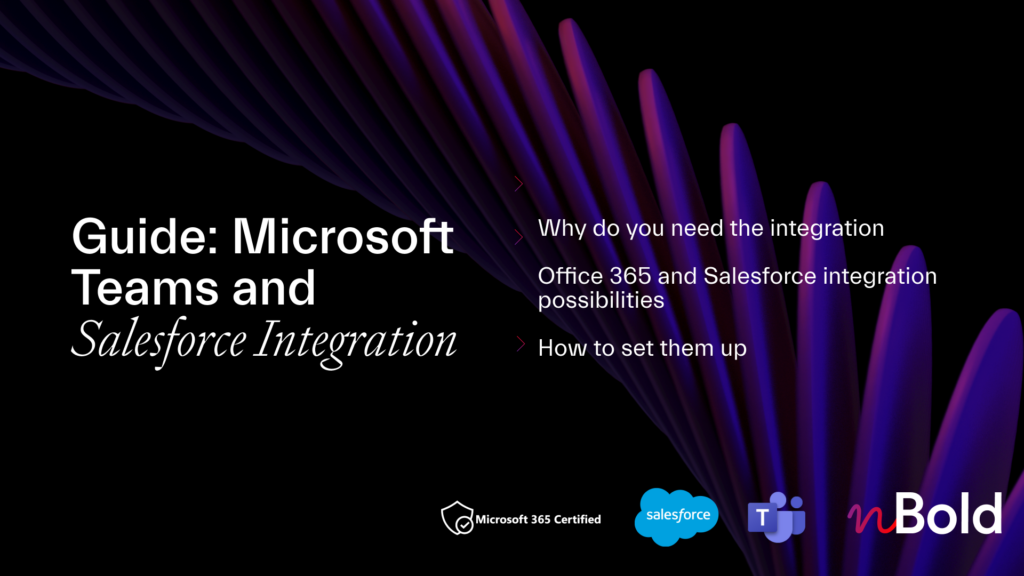
Guide: Microsoft Teams and Salesforce Integration
- Why you should integrate Salesforce with Teams
- All integration possibilities
- Most demanded use cases
- How to set up the integrations
Basic Opportunity collaboration with Salesforce and Teams
Let’s discuss a real example. Suppose you have a sales deal team in Microsoft Teams. Colleagues from different departments collaborate on opportunities, track progress, follow news and product updates, share proposals and agreements, and close deals.
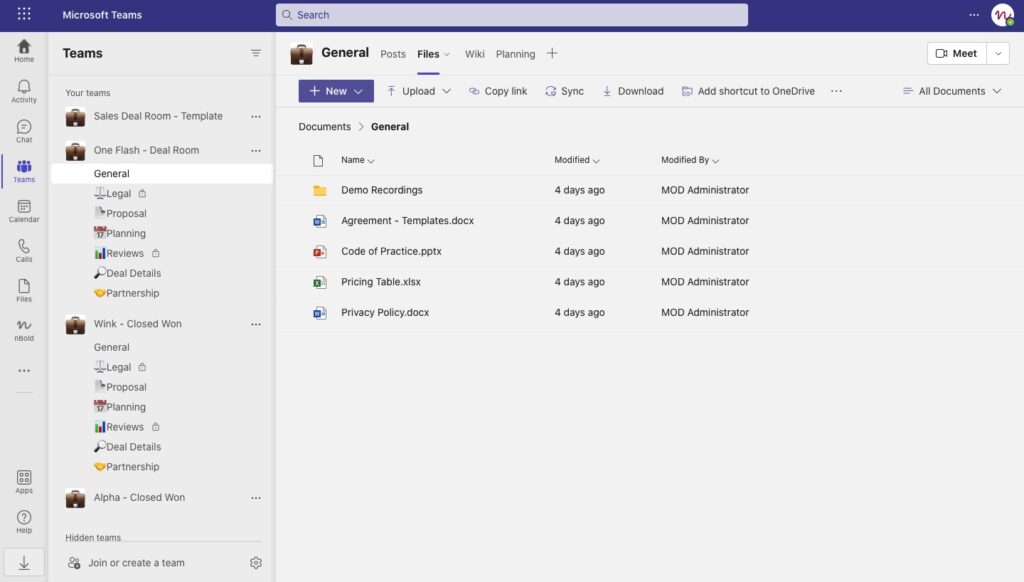
At the same time, salespeople work with opportunity information inside Salesforce, updating contacts’ information, activities, and insight.
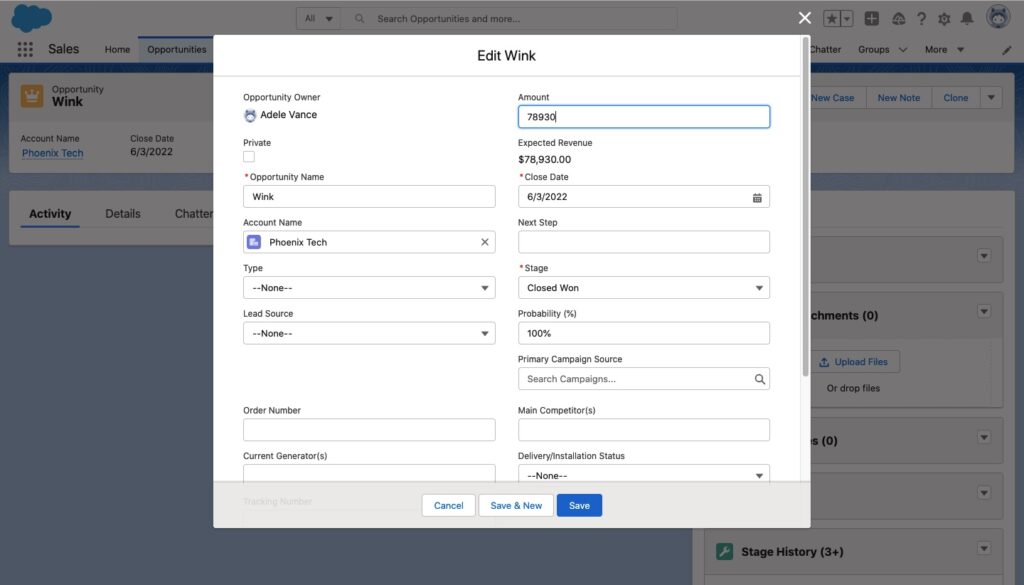
So how to align these colleagues? How to build a single workspace for them to drive sales wins?
First, you can install Salesforce app for Microsoft Teams. Here are some basic features:
Mention Salesforce records in a channel or chat
With Salesforce and Microsoft Teams integration your sales reps can mention Salesforce records right in team’s channels. In this way, your teammates will see a new post with opportunity details, such as name, contact’s information, record type, and so on. You can define which information will be displayed in a card. This will simplify opportunity collaboration so your sales reps can start a new conversation, ask advice, and share updates without loss of information.
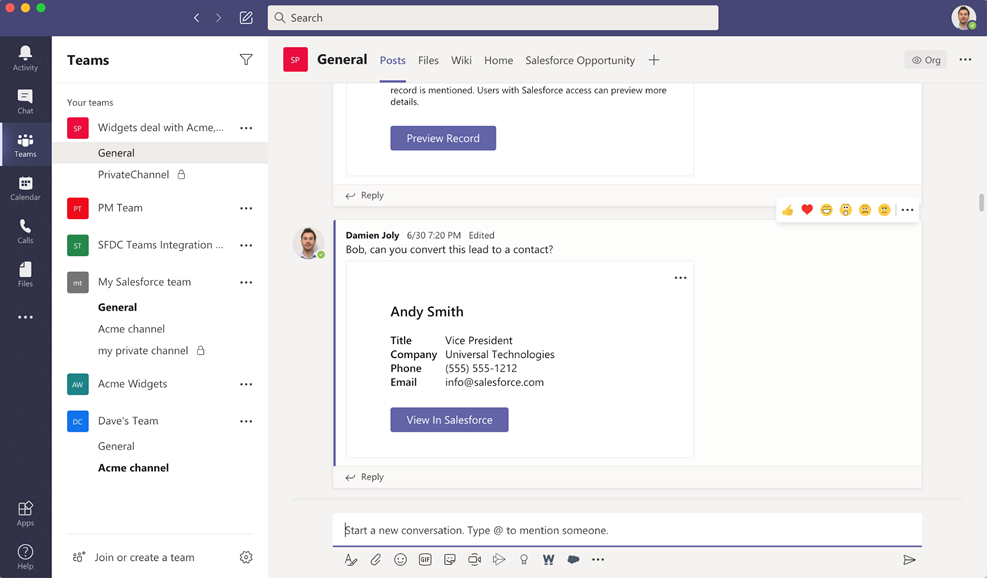
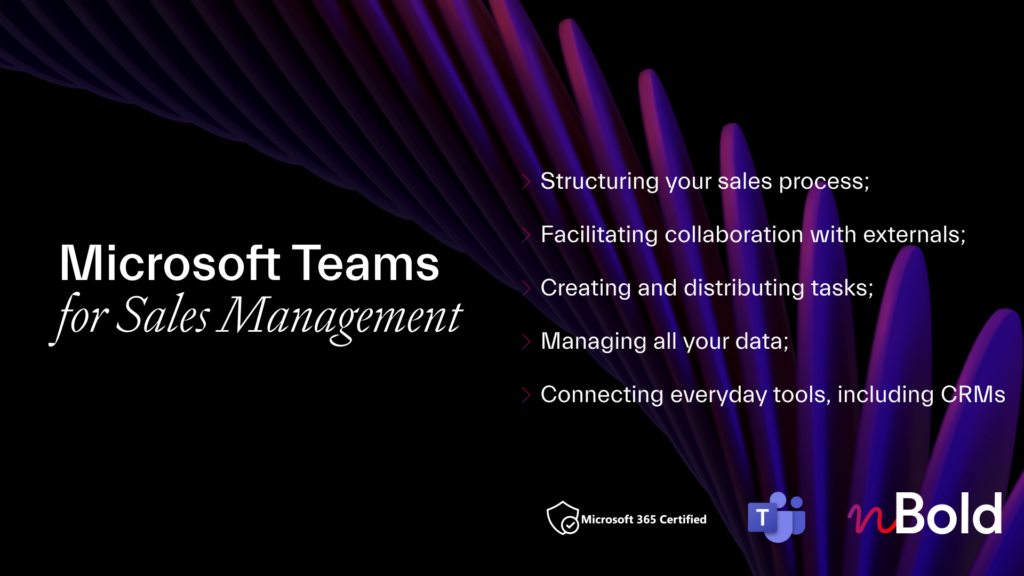
White Paper: Microsoft Teams for Sales Management
- How to use Microsoft Teams for Sales Management
- Create Teams templates for your sales processes
- How to connect Salesforce with Microsoft Teams
Add Salesforce Opportunity as a new tab in Teams
Suppose you’re about to close a deal and now you need to prepare a new proposal and agreements using information from Opportunity record. To do this quickly, you can add Salesforce record as a new tab into the right channel. Therefore, your colleagues will have a quick access to all required opportunity information. Moreover, they can start a conversation or online meeting to discuss strategy and next steps.
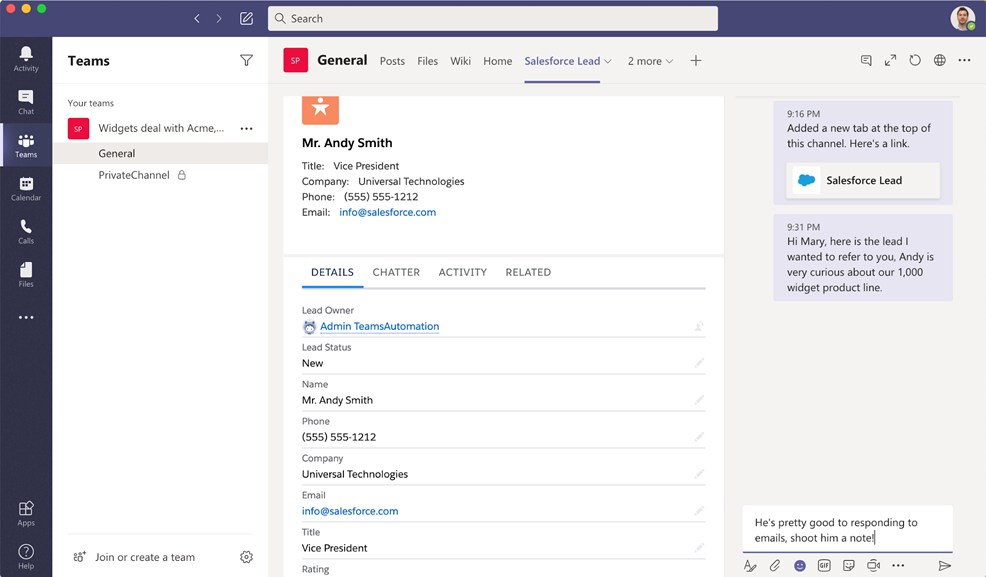
Edit records from Teams
Finally, your sales reps can edit Opportunity records right in Teams environment. Imagine, they just had a demo call with a prospect. Then, sales reps can add notes and news to the record right from Microsoft Teams. This will allow them to keep all information, insights from the customer and share their issues with teammates. Therefore, together your colleagues can find the right solution and provide the prospect with a needed product.
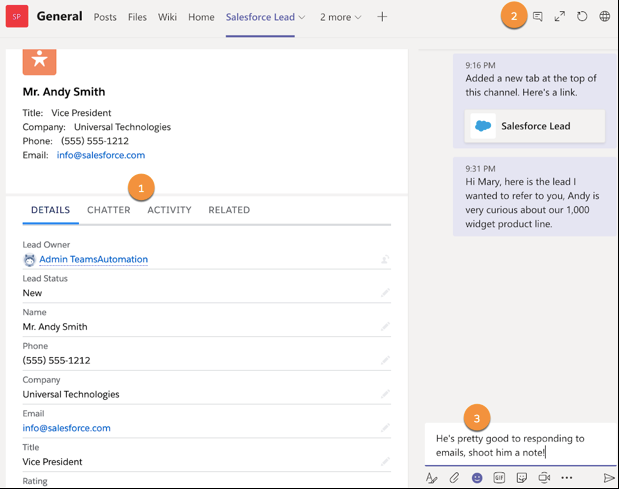
Why do you need to integrate Salesforce Opportunities with Collaboration Templates?
With Salesforce for Microsoft Teams, you’re able to perform basic functions, such as record’s mentioning and editing. But you still may wonder about collaboration improvements at scale. And your sales team can still have many questions for example:
· Do they need to create tabs for each new Salesforce Opportunity?
· Who must create these tabs and start conversations in Teams? And if they have the right level of access?
· In which channel or team should sales reps start conversation on new Opportunity?
· What to do with the workspace after a deal is closed?
To answer these questions and structure the way your team work on sales deals you need to create playbacks and guidelines where you can describe your sales process step by step. But there is a more effective solution! With advanced Salesforce integration with Collaboration Templates, you can manage the entire sales process, automate repetitive sales tasks and manage your deals in a structured and strong protected workspace. And this is not all the capabilities.
Get the single collaborative workspace for every Salesforce Opportunity
Let’s say, your sales rep has just created a new Opportunity record in Salesforce. With Connected Apps technology by nBold you can rest assured that your sales team will have an ideal collaborative workspace to close this deal.
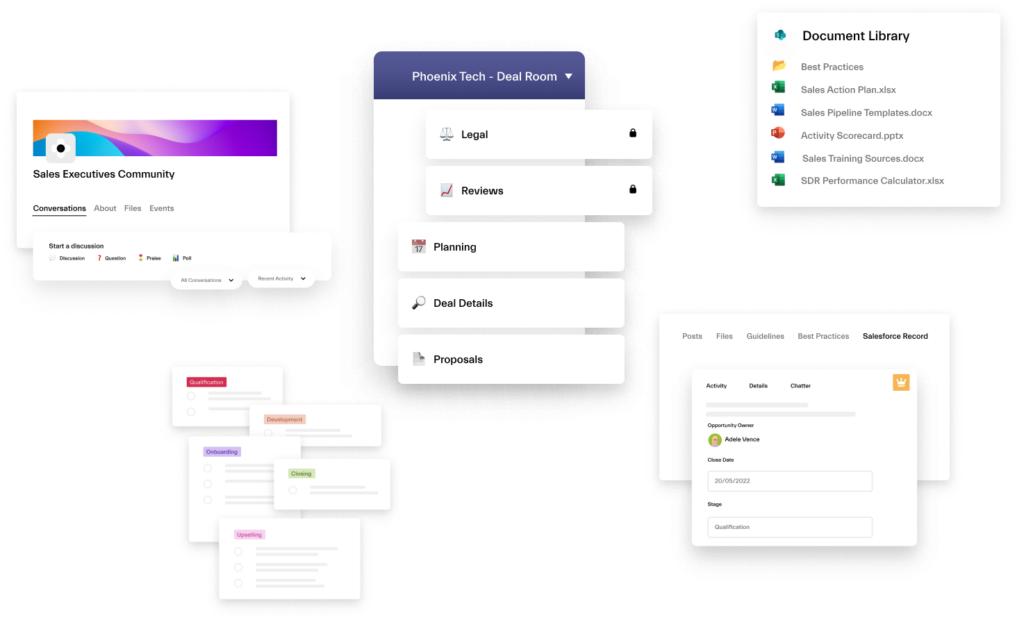
So, the team in Microsoft Teams will be created automatically from your own Collaboration Template. It will contain:
– Standard and Private channels to collaborate on sales deals in a structured way and share updates and documents according to the relevant topics
-A pre-built board of tasks for repetitive sales processes, so everyone will know what to do once a deal is created
–Files templates if they need to quickly get the sample for the proposals, demo presentation, agreements, etc.
-Document library with guidelines, playbooks, and codes of practice, so your sales team members will have access to your knowledge base.
-Tabs with your everyday apps, for instance Communities to connect your salespeople with the experts and leaders, etc.
As a result, your team collaborates on closing the deal in a single space with all the required content that can help them to close it deal faster. In addition, you can filter the creation of a new team depending on the deal stage and amount if you don’t need to have a separate team for each new Opportunity in your Salesforce.
Seamless collaboration with other colleagues who do not have Salesforce licence
Connected Apps solution also gives you the capability to get the right people in the right team. So, you can connect your Opportunity owner in Salesforce with the rest of the team who will work on closing the same deal. Thus, to the opportunity collaboration team you can add:
-Outbound and Inbound SDRs – develop sales deals and communicate directly with prospects
-Marketing managers – prepare marketing content for prospects
-Sales operations manager – oversees and guides a team
-Service managers – develop product and react on any issues and customer feedback
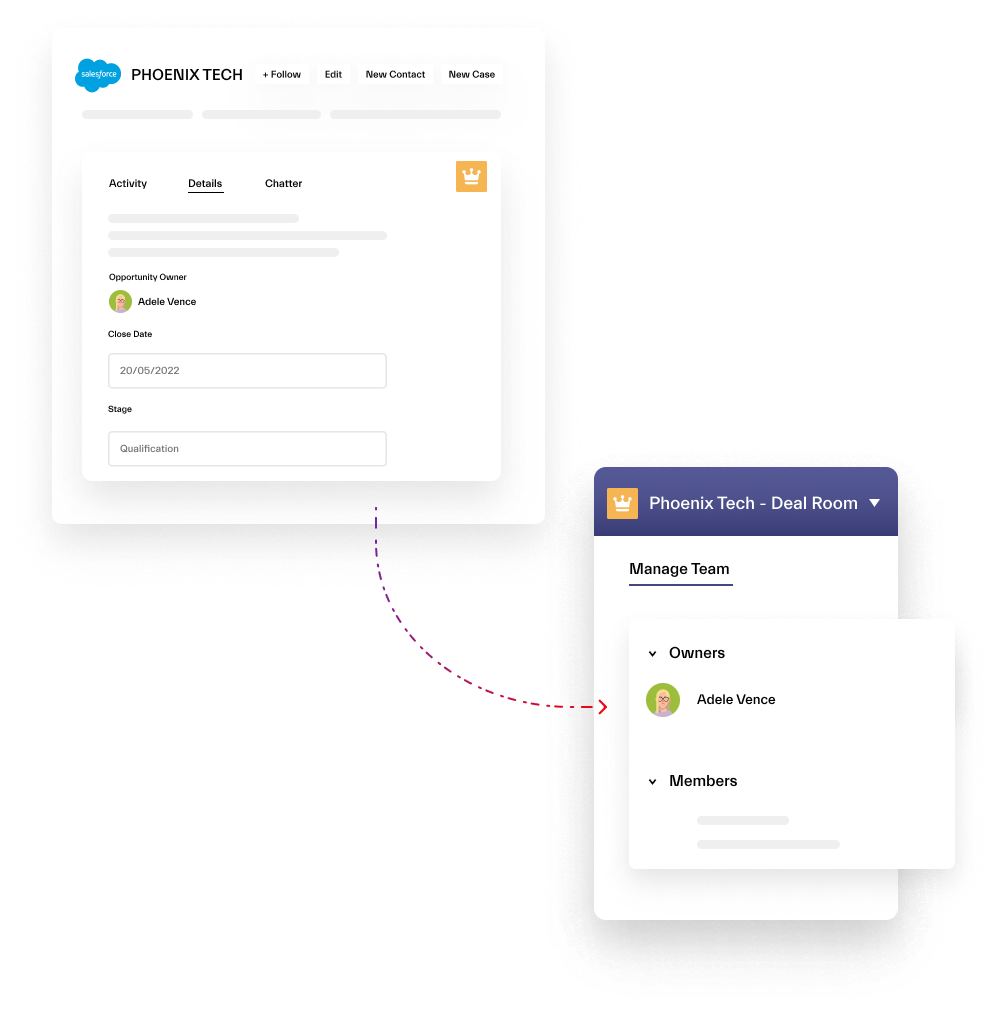
As a result, your sales team will collaborate on opportunities in an ideal workspace even if they don’t have a Salesforce licence.
Scaling collaboration, especially in large organisations
With Salesforce and Collaboration Templates integration you will get the same level of execution from one sales deal to another. Automate team creation for all of your Salesforce Opportunities. This can be an ideal solution to streamline business processes, especially in large organizations.
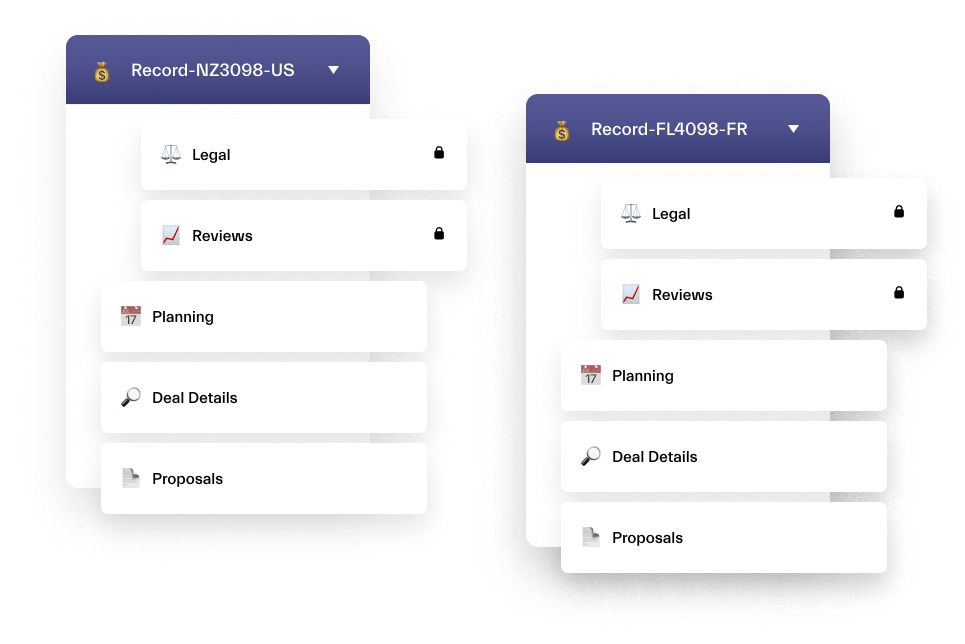
Stay focused on the Record updates, even without the Salesforce access
The workspace was created, and the full team is brought together, what’s next? In addition to the pre-built team with helpful content for your team members, you will be able to get notifications on each Salesforce record’s changes. Is the deal stage updated? Or the excepted amount is changed? Your team will see that once those changes are made in your Salesforce environment. In this way, your team can quickly react on any changes, discuss an action plan and ask help from the experts if needed.
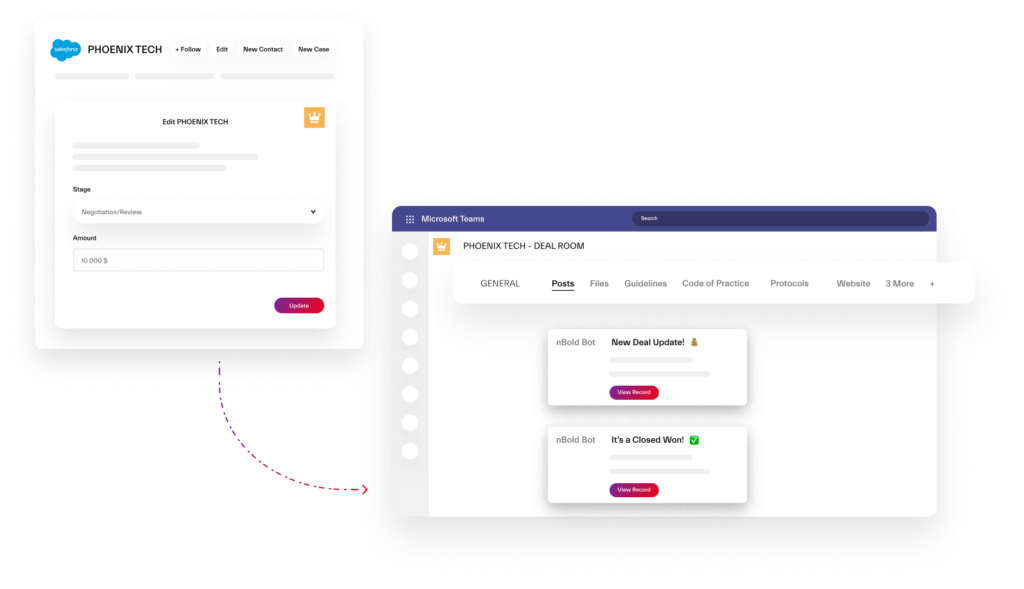
Keep your working environment clean and organized
Everything I mentioned below, sounds good when you have one team created. But what if you have hundreds of Opportunity records? How to keep your working environment clean and organized? Well, with Collaboration Templates you can manage your governance policies with no-code solutions. Your IT will love it.
For example, you can set up the naming rules with dynamic categories from Salesforce, such as Opportunity’s name, description, location, etc. In this way, you will simplify the searching process for your team members who will quickly understand the purpose of the team with the right naming rules. In addition, they will be able to search for the right team based on Opportunity stage, ID, name, etc. – depending on your unique business case.
Finally, when a deal is closed, you need to define what to do with a workspace to reduce the number of unused teams and keep your date clean. Well, nBold has the solution as well. You’re able to automatically archive or delete the team once a deal is closed. If you decide to keep your data, simply rename a team with your unique naming rules.
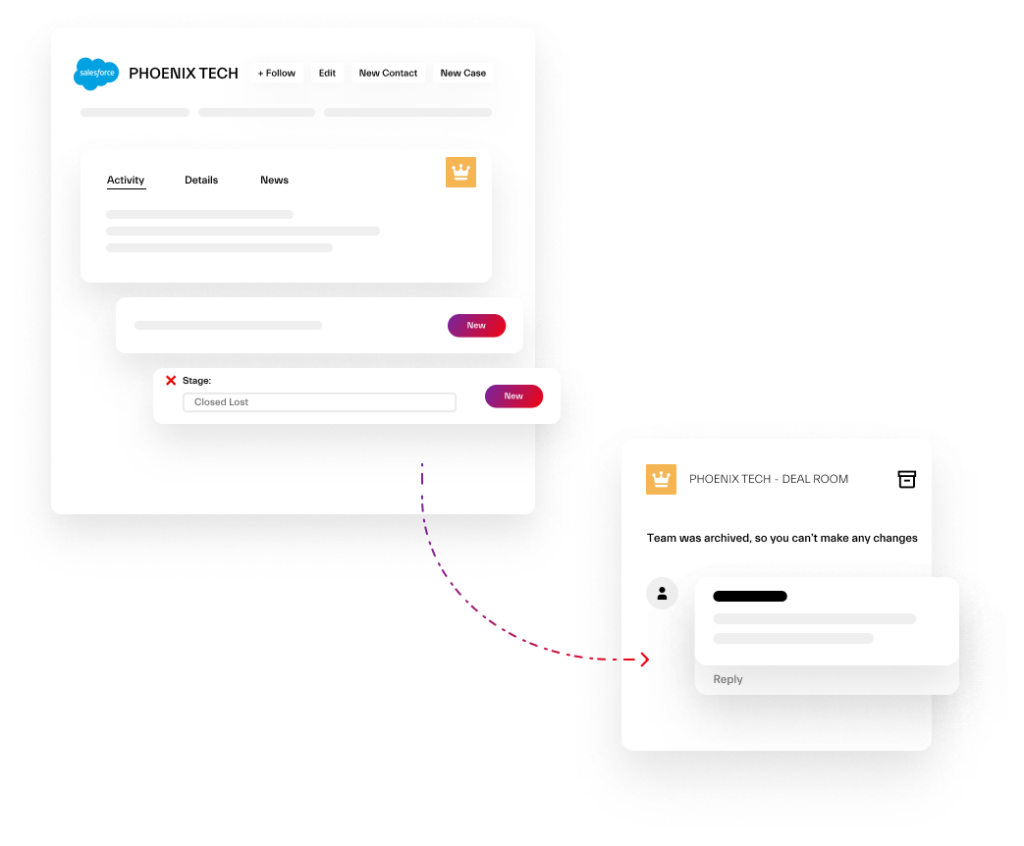
Today, there are tons of solutions that help you manage your sales process. At nBold we believe that collaborative way of working is the basis for successful and efficient working processes. And we’re here to help you with building the unique solution that fits your business needs. And with our latest Connected Apps feature you will definitely achieve a new level of collaboration. At scale. Across the platforms.
